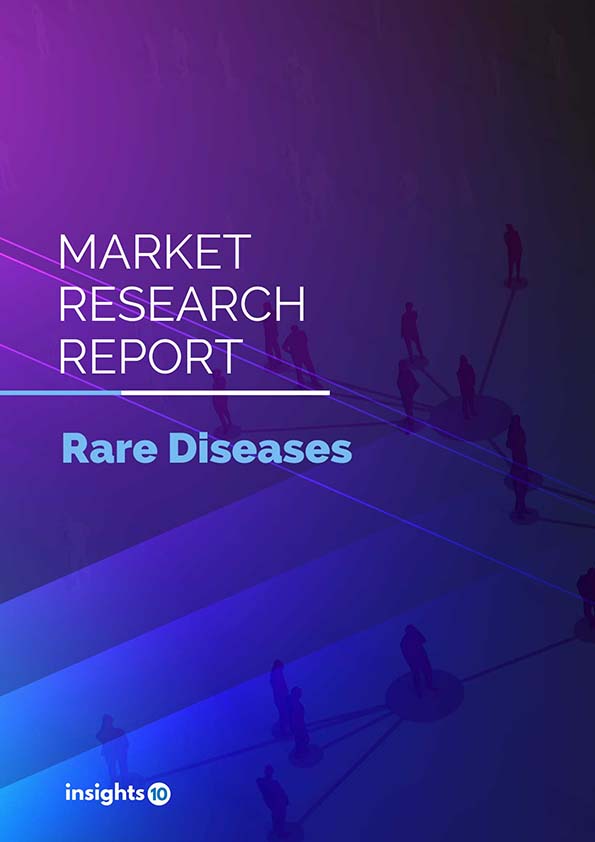Canada Oral Care Market Analysis
Canada's oral care market was valued at $2.8 Bn in 2022 and is estimated to expand at a CAGR of 6.2% from 2022 to 2030 and will reach $4.5 Bn in 2030. One of the main reasons propelling the growth of this market is the introduction of newer technologies and the aging population. The market is segmented by type, drug, and distribution channel. Sun Pharmaceutical Industries, Altima Dental, Dental Solutions, Millenium Dental, Dentalcorp, and 123Dentist are some of the key players in this market.
Buy Now

Canada Oral Care Market Executive Summary
Canada's oral care market was valued at $2.8 Bn in 2022 and is estimated to expand at a CAGR of 6.2% from 2022 to 2030 and will reach $4.5 Bn in 2030. The Canada Oral Care market was valued at $2.8 Bn in 2022 and is estimated to expand at a compound annual growth rate (CAGR) of 6.2% from 2022 to 2030 and will reach $4.5 Bn in 2030. The dental care market in Canada is a vital part of the healthcare industry, providing preventative and corrective dental services to millions of Canadians. The market is highly regulated, with the majority of dental services being covered by provincial health insurance plans or private insurance companies.
The dental care market in Canada is highly competitive, with many private dental clinics and chains operating across the country. In addition to private clinics, there are also public dental clinics that provide services to low-income individuals and those without insurance coverage. The Canadian Dental Association (CDA) is the national professional association for dentists in Canada. The CDA provides a range of resources and support to its members, including continuing education programs, practice management resources, and advocacy on behalf of the dental profession.

Market Dynamics
Market Growth Drivers
The aging population is a significant driver of growth in the dental care market. As people age, they are more likely to experience dental problems such as tooth decay, gum disease, and tooth loss. The number of Canadians aged 65 and over is projected to increase from 6.4 Mn in 2020 to 10.4 Mn by 2036. Dental insurance coverage is a significant driver of demand in the dental care market. According to the Canadian Life and Health Insurance Association, approximately 67% of Canadians have some form of dental insurance. As dental insurance coverage continues to expand, more people are able to access dental care services, which is driving market growth. Technological advancements in dentistry, such as 3D printing, CAD/CAM systems, and digital imaging, are also driving growth in the dental care market. These technologies are improving the accuracy and efficiency of dental procedures, making them more accessible and affordable for patients. The demand for cosmetic dentistry services, such as teeth whitening, veneers, and orthodontics, is also driving growth in the dental care market. The global cosmetic dentistry market is projected to reach $27.95 Bn by 2024, growing at a CAGR of 6.8% from 2019 to 2024.
Market Restraints
There is limited data available on the dental care market in Canada, particularly in terms of the number of dental procedures performed, the cost of these procedures, and the revenue generated by dental clinics. This can make it difficult for investors, researchers, and policymakers to fully understand the dynamics of the market. The dental care market in Canada is highly fragmented, with many small and independent dental clinics operating across the country. This fragmentation can make it difficult to collect data on the market as a whole, as there is no central authority or database that tracks dental services and procedures. There is limited standardization of dental procedures and pricing across Canada, as dental services are largely regulated at the provincial level. This can make it difficult to compare prices and outcomes across different regions and clinics. Patient data is often protected by privacy laws, making it difficult to collect data on patient outcomes and satisfaction with dental services. This can make it difficult to measure the quality of dental care provided and to identify areas for improvement.
Competitive Landscape
Key Players
- Altima Dental
- Dental Solutions
- Millenium Dental
- Dentalcorp
- 123Dentist
- Heartland Dental
Healthcare Policies and Regulatory Landscape
The healthcare policy and regulatory framework for dental care in Canada is complex, as dental services are largely regulated at the provincial level. Each province has its own healthcare policies and regulations governing the provision of dental services, which can vary widely in terms of coverage, cost, and quality.
The federal government also plays a role in regulating dental care through the Canada Health Act, which sets out the basic principles of Medicare, including universality, accessibility, portability, comprehensiveness, and public administration. While dental services are not covered under Medicare, the Canada Health Act provides a framework for the regulation and delivery of healthcare services in Canada.
In addition to federal and provincial regulations, the Canadian Dental Association (CDA) also provides guidance and support to dentists and dental clinics across the country. The CDA advocates for the dental profession and promotes the delivery of high-quality dental care through its standards of practice, guidelines, and educational programs.
Reimbursement Scenario
The reimbursement scenario in the Canadian dental care market is complex and varies depending on the province or territory. While dental services are not covered under Canada's national health insurance program (Medicare), many Canadians have access to dental coverage through private insurance plans, employer-sponsored plans, or government-funded programs.
In some provinces, such as Quebec and Manitoba, dental services are covered under public healthcare plans for certain groups, such as low-income individuals or children. In other provinces, such as Ontario and Alberta, dental services are not covered under public healthcare plans and individuals must rely on private insurance or pay for services out-of-pocket. Private insurance plans typically cover a percentage of the cost of dental services, with coverage varying depending on the plan and the type of service. Some plans may also have annual or lifetime limits on coverage.
Employer-sponsored plans may offer dental coverage as part of a comprehensive benefits package, with coverage and costs varying depending on the employer and the plan. Government-funded programs, such as the Non-Insured Health Benefits (NIHB) program for First Nations and Inuit people, may also provide coverage for dental services.
1. Executive Summary
1.1 Disease Overview
1.2 Global Scenario
1.3 Country Overview
1.4 Healthcare Scenario in Country
1.5 Patient Journey
1.6 Health Insurance Coverage in Country
1.7 Active Pharmaceutical Ingredient (API)
1.8 Recent Developments in the Country
2. Market Size and Forecasting
2.1 Epidemiology of Disease
2.2 Market Size (With Excel & Methodology)
2.3 Market Segmentation (Check all Segments in Segmentation Section)
3. Market Dynamics
3.1 Market Drivers
3.2 Market Restraints
4. Competitive Landscape
4.1 Major Market Share
4.2 Key Company Profile (Check all Companies in the Summary Section)
4.2.1 Company
4.2.1.1 Overview
4.2.1.2 Product Applications and Services
4.2.1.3 Recent Developments
4.2.1.4 Partnerships Ecosystem
4.2.1.5 Financials (Based on Availability)
5. Reimbursement Scenario
5.1 Reimbursement Regulation
5.2 Reimbursement Process for Diagnosis
5.3 Reimbursement Process for Treatment
6. Methodology and Scope
Canada Oral Care Market Segmentation
By Product Type (Revenue, USD Billion):
- Toothpaste
- Toothbrush
- Mouthwash
- Dental Accessories
- Denture Products
- Others
By Distribution Channel (Revenue, USD Billion):
- Retail Pharmacies
- Online Channels
- Supermarkets
- Dental Dispensaries
By Demographics
- Age (children, adults, and geriatric population)
- Gender
- Income
- Education
- Occupation
Methodology for Database Creation
Our database offers a comprehensive list of healthcare centers, meticulously curated to provide detailed information on a wide range of specialties and services. It includes top-tier hospitals, clinics, and diagnostic facilities across 30 countries and 24 specialties, ensuring users can find the healthcare services they need.
Additionally, we provide a comprehensive list of Key Opinion Leaders (KOLs) based on your requirements. Our curated list captures various crucial aspects of the KOLs, offering more than just general information. Whether you're looking to boost brand awareness, drive engagement, or launch a new product, our extensive list of KOLs ensures you have the right experts by your side. Covering 30 countries and 36 specialties, our database guarantees access to the best KOLs in the healthcare industry, supporting strategic decisions and enhancing your initiatives.
How Do We Get It?
Our database is created and maintained through a combination of secondary and primary research methodologies.
1. Secondary Research
With many years of experience in the healthcare field, we have our own rich proprietary data from various past projects. This historical data serves as the foundation for our database. Our continuous process of gathering data involves:
- Analyzing historical proprietary data collected from multiple projects.
- Regularly updating our existing data sets with new findings and trends.
- Ensuring data consistency and accuracy through rigorous validation processes.
With extensive experience in the field, we have developed a proprietary GenAI-based technology that is uniquely tailored to our organization. This advanced technology enables us to scan a wide array of relevant information sources across the internet. Our data-gathering process includes:
- Searching through academic conferences, published research, citations, and social media platforms
- Collecting and compiling diverse data to build a comprehensive and detailed database
- Continuously updating our database with new information to ensure its relevance and accuracy
2. Primary Research
To complement and validate our secondary data, we engage in primary research through local tie-ups and partnerships. This process involves:
- Collaborating with local healthcare providers, hospitals, and clinics to gather real-time data.
- Conducting surveys, interviews, and field studies to collect fresh data directly from the source.
- Continuously refreshing our database to ensure that the information remains current and reliable.
- Validating secondary data through cross-referencing with primary data to ensure accuracy and relevance.
Combining Secondary and Primary Research
By integrating both secondary and primary research methodologies, we ensure that our database is comprehensive, accurate, and up-to-date. The combined process involves:
- Merging historical data from secondary research with real-time data from primary research.
- Conducting thorough data validation and cleansing to remove inconsistencies and errors.
- Organizing data into a structured format that is easily accessible and usable for various applications.
- Continuously monitoring and updating the database to reflect the latest developments and trends in the healthcare field.
Through this meticulous process, we create a final database tailored to each region and domain within the healthcare industry. This approach ensures that our clients receive reliable and relevant data, empowering them to make informed decisions and drive innovation in their respective fields.
To request a free sample copy of this report, please complete the form below.
We value your inquiry and offer free customization with every report to fulfil your exact research needs.









































